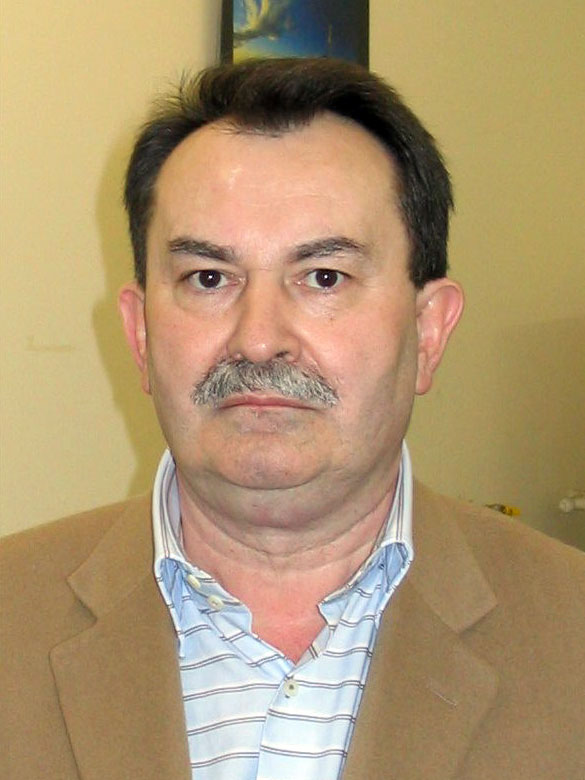He began his research career after graduation under Prof. Mirko Mirnik at the Laboratory for Radiochemistry of the Ruđer Bošković Institute and after two years received his master’s degree at the University of Zagreb. He obtained his PhD in 1978 at the Faculty of Science, University of Zagreb.
Together with his collaborators, he has published around 250 primary scientific papers on the chemistry and physics of metal oxides and oxide glasses in journals indexed by Current Contents, which have received more than 3,000 independent citations.
At the beginning of his scientific career, he studied adsorption and desorption equilibria on different adsorbents, investigated and characterized various colloids and complex compounds labeled with short-lived radioisotopes for use in nuclear medicine. On the cyclotron at the Ruđer Bošković Institute, he produced the short-lived radioisotope Ru-97 in sufficient yield (EOB) for nuclear medicine applications and developed original chemical reactions for the separation of this radioisotope from the cyclotron target and its conversion into a suitable chemical form for medicine.
In 1976 and 1977, he worked at the Institute of Physical Chemistry and Radiology, Loránd-Eötvös University, supported by a scholarship from the People’s Republic of Hungary. From 1980 to 1982, he was a visiting scientist at Lehigh University, Bethlehem, Pennsylvania, supported by a fellowship from the Office of Naval Research, Washington D.C., and the invitation of Prof. Henry Leidheiser. As a result of his Mössbauer spectroscopy research at Lehigh University, he published eight scientific papers (Nature, J. Coll. Interface Sci., as well as two papers each in J. Electrochem. Soc., Corrosion Sci., and Radiochem. Radioanal. Lett.).
He opened new areas of research in the chemistry of metal oxides, oxide glasses, and glass ceramics, with a special focus on the application of different spectroscopic techniques due to the phase nature of these materials. In the last fifteen years, Svetozar Musić and his collaborators directed their scientific interest toward the study of how methods of chemical synthesis affect the chemical, microstructural, and physical properties of metal oxide particles. They extensively studied the syntheses and properties of nanometer-sized particles of Fe2O3, Fe3O4, Mn3O4, ZrO2, HfO2, Al2O3, Ga2O3, ZnO, TiO2, RuO2, IrO2, and Nb2O5, as well as the mechanisms and kinetics of precipitation of these compounds. Svetozar Musić and collaborators synthesized TiO2 nanoparticles and were the first to propose determining the distribution of nanoparticle sizes outside the glass matrix using low-frequency Raman scattering. More recently, his scientific interest included the study of structural, microstructural, and physical properties of different films.
Recently, together with Dr. Mira Ristić and Dr. Stjepko Krehula, he published the chapter "57-Fe Mössbauer spectroscopy in the investigation of the precipitation of iron oxides" in the book "Mossbauer Spectroscopy: Application in Chemistry, Biology, Industry and Nanotechnology" (Editors: V. K. Sharma, G. Klingelhofer, T. Nishida), John Wiley & Sons, 2013, pp. 470-504. He chaired two international scientific conferences, the XXIXth European Congress on Molecular Spectroscopy, Opatija, August 31 – September 5, 2008, and the International Conference on the Applications of the Mössbauer Effect, Opatija, September 1 – 6, 2013.
Svetozar Musić taught the course "Selected Chapters in Surface and Colloid Chemistry" at the Faculty of Science together with Professors Nikola Kallay and Tajana Preočanin, while at the Faculty of Chemical Engineering and Technology he taught the course "Spectroscopic Methods in Materials Research" together with Dr. Mira Ristić. He supervised 15 master’s and doctoral students.
At the Division of Materials Chemistry, he introduced techniques for structural, electron-microscopic, and spectroscopic studies of metal oxides and oxide glasses. Among other things, he set up Mössbauer spectrometers, the only instruments of their kind in Croatia. In addition to his extensive scientific work, Svetozar Musić carried out numerous important functions at the Ruđer Bošković Institute. He was the first Head of the Laboratory for the Synthesis of New Materials and Director of the scientific research program "Science and Technology of Materials," and based on this program he founded the Division of Materials Chemistry, where he served as Head from 1996 until his retirement in 2012.
He was a member of the Election Body for Chemistry from 1983 to 2011 and for a short time also Assistant Director of the Ruđer Bošković Institute. He coordinated the program "New Functional Materials," one of the largest scientific research programs in Croatia, involving numerous researchers from the Ruđer Bošković Institute, the Faculty of Electrical Engineering and Computing, and the Faculty of Chemical Engineering and Technology. He was also a member of the Nuclear Safety Council of the Croatian Parliament.
He received the Award of the Croatian Academy of Sciences and Arts for his overall scientific work in 2006. He was elected Associate Member in Class II for Mathematics, Physics, and Chemistry of the Croatian Academy of Sciences and Arts in 2010 and in 2012 received the honorary title of Distinguished Scientist of the Ruđer Bošković Institute.


